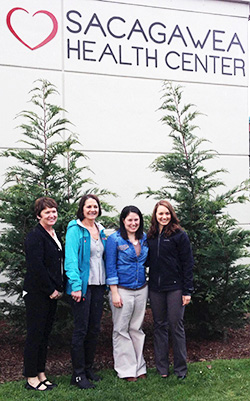
With support from OSBHA’s 2013-2014 CORE grant program, the
Sacagawea Health Center is providing adolescents at St. Helens High School accessible opportunities to learn about healthy relationships and safe sexual practices within the school setting. Specifically, this grant supports the Teen Health Advocacy Team (aka THAT club) to improve their communication, education, and involvement with their high school peers.
School Health Fair
In the fall of 2013, THAT club distributed a school-wide survey to determine what health topics concerning healthy relationships and sexuality were of greatest interest to the student population. In total, 20 percent of the St. Helens High School population participated in the survey. THAT club used data collected from the evaluation to plan a school-wide health fair, “That’s Healthy,” to provide information focusing on safer sex, pregnancy, and healthy relationships.
The “That’s Healthy” health fair was presented in January 2014 with tables hosted by TransActive Gender Center, Support Advocacy Freedom Empowerment (SAFE) of Columbia County, and Legacy Health featuring topics such as LGBTQ health, healthy relationships, and HPV/STDs. THAT club also hosted a table concerning prenatal health.